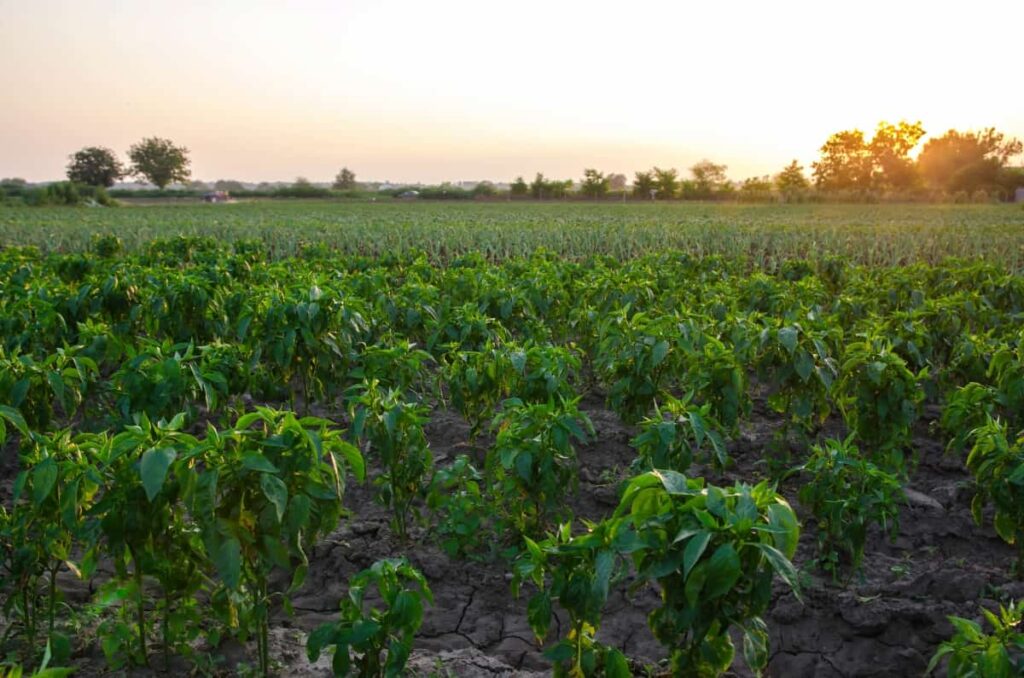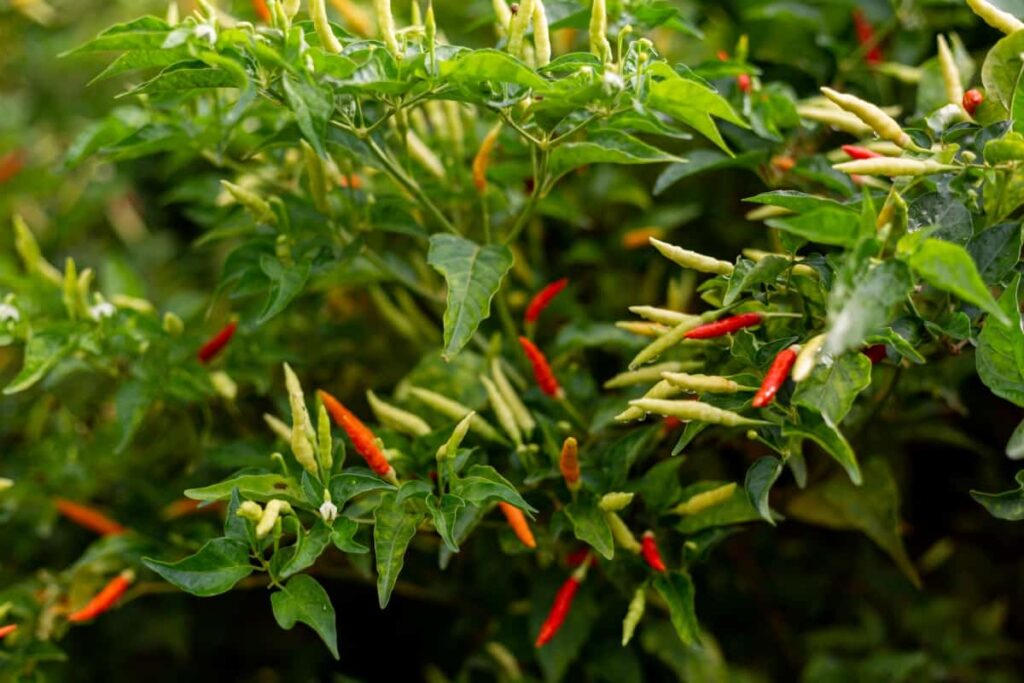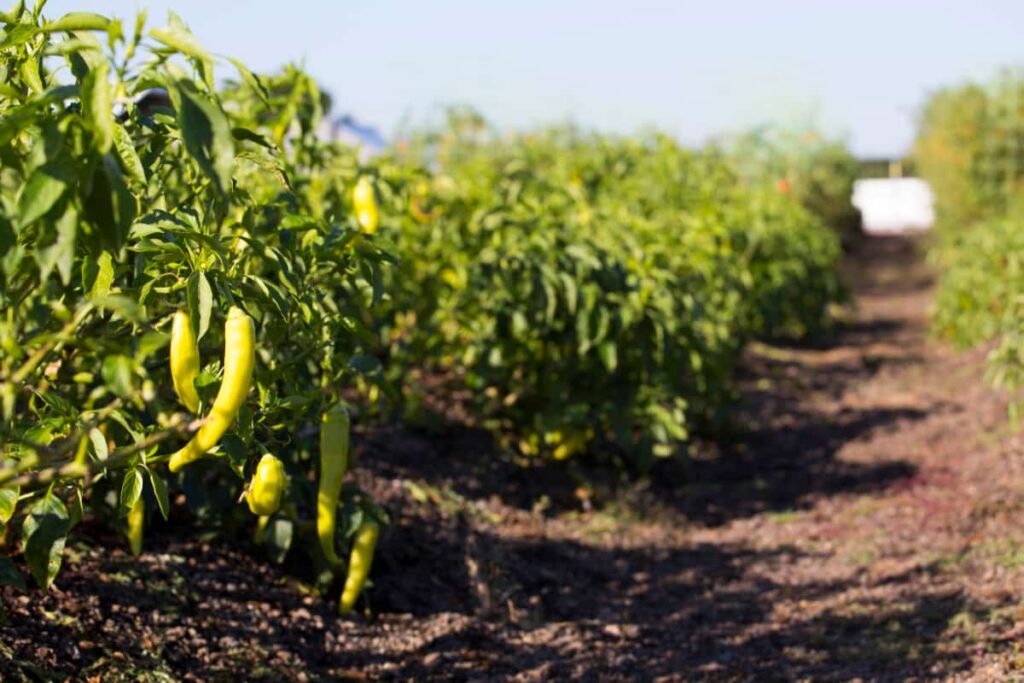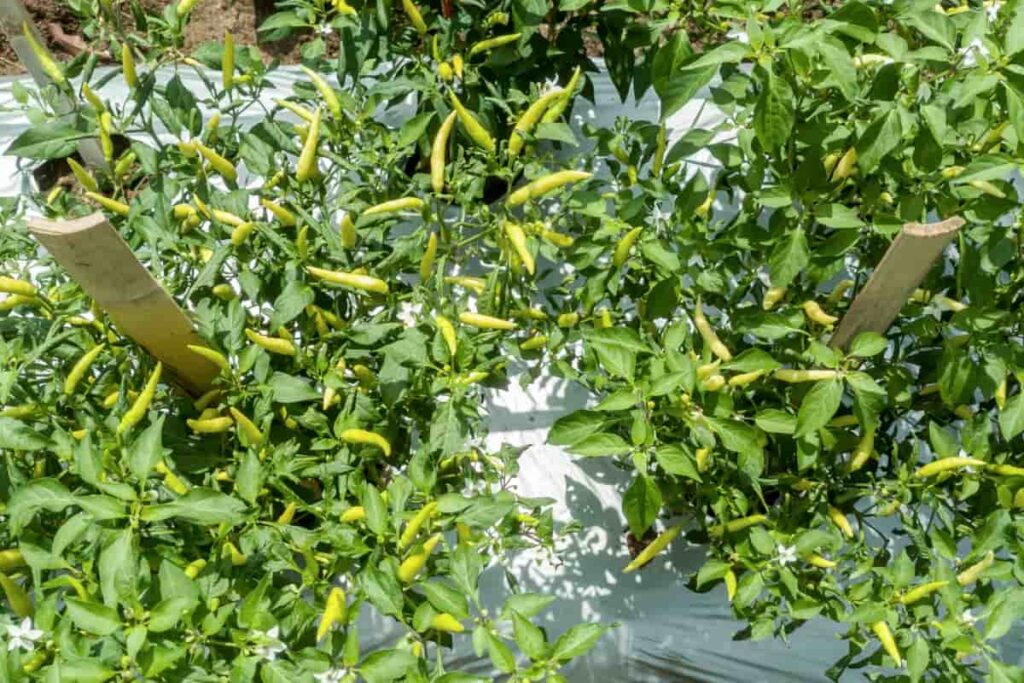Chilli plants are renowned for their fiery fruits, but their journey from seed to harvest isn’t always straightforward. One common hurdle Chilli growers encounter is the lack of flowering, which ultimately leads to poor fruit production. Understanding the factors affecting Chilli plant blooms is crucial for fostering a flourishing Chilli garden.

In this guide, we’ll delve into the various issues that can impede flowering in Chilli plants and provide you with 100% effective strategies to overcome these obstacles, improving Chilli plant flower yield and yielding bountiful harvests.
10 Reasons Why Your Chilli Plant is Not Flowering
Insufficient Light Exposure
Chilli plants are sun-loving species, and inadequate light exposure can be one of the reasons behind Chilli plants not flowering. Insufficient light, especially during the flowering stage, disrupts the plant’s biological processes, leading to a lack of flower development. Indoors, placing Chilli plants near south-facing windows or supplementing with grow lights can enhance light exposure.
Outdoors, ensuring they receive at least six hours of direct sunlight daily, is crucial. Additionally, be mindful of shading from nearby structures or plants. Regularly rotate potted plants to ensure all sides receive adequate light. Addressing light deficiencies promptly is the key to flowering in Chilli plants can encourage healthy flowering and maximize fruit production in Chilli plants.
Overwatering or Underwatering
Watering practices play a pivotal role in Chilli plant health, including flowering. Overwatering or underwatering can be the cause of Chilli flowering issues, impeding their ability to produce flowers. Overwatering leads to waterlogged soil, suffocating the roots and causing root rot, while underwatering deprives the plant of essential moisture, stunting growth and flowering.
Maintaining proper soil moisture levels is crucial; the soil should be moist consistently but not soggy. Ensure proper drainage to prevent waterlogging and monitor soil moisture regularly, especially during hot weather. Adjust the watering frequency based on environmental conditions and the plant’s needs.
Nutrient Imbalance in Soil
Chilli plants, like all plants, require a balanced array of nutrients for healthy growth and prolific flowering. Nutrient imbalances in the soil can hamper the plant’s ability to flower adequately. Common deficiencies or excesses in essential nutrients such as nitrogen, phosphorus, potassium, calcium, magnesium, and micronutrients can all impact flowering.
How to make Chilli plants flower? To address nutrient imbalances, start with a soil test to identify deficiencies or excesses accurately. Once identified, amend the soil accordingly using organic fertilizers or soil supplements tailored to the specific needs of Chilli plants. For example, phosphorus deficiency often leads to poor flowering, so incorporating a phosphorus-rich fertilizer can rectify this issue.
Incorrect Temperature Conditions
Temperature fluctuations outside the ideal range can significantly affect Chilli plant flowering. These plants thrive in warm conditions but can struggle with extremes or sudden changes in temperature. High temperatures, especially above 32°C, can hinder flower development, while excessively low temperatures, below 10°C, can inhibit flowering and even damage the plant.
In case you missed it: How to Grow Green Chilli Peppers Faster: Best Tips to Increase Flowering, Fruiting, and Production Yield

For boosting Chilli plant flowering, provide adequate protection during extreme weather conditions. For instance, shading or providing temporary cover during heatwaves can mitigate stress on the plants. In colder climates, consider using row covers, mulching, or even moving potted plants indoors during chilly nights.
Improper Pruning Techniques
Pruning is a valuable practice for maintaining the health and productivity of Chilli plants, but incorrect techniques can hinder flowering and fruit production. Improper pruning, such as excessive or untimely removal of stems, branches, or flower buds, can disrupt the plant’s growth cycle and diminish its ability to flower. To address this issue, educate yourself on proper pruning techniques for Chilli plants. Focus on removing dead, damaged, or diseased branches, as well as those that crowd the plant or inhibit airflow.
Avoid pruning excessively during the flowering stage, as this can remove potential flower buds, lead to Chilli plant flowering problems, and reduce fruit yield. Regularly inspect plants and prune selectively to encourage branching and flower development. When pruning, use clean and sharp tools to minimize damage and prevent the diseases from spreading.
Pest and Disease Infestation
Pest and disease infestations pose significant threats to the health and flowering capabilities of Chilli plants. Common pests like aphids, spider mites, and whiteflies can sap the plant’s energy, weaken its defences, and interfere with flower development. Similarly, fungal infections like powdery mildew or bacterial diseases such as bacterial wilt can hinder flowering and reduce fruit yield.
To encourage blooms in Chilli plants by controlling pests, implement integrated pest management (IPM) strategies such as introducing beneficial insects, using insecticidal soaps or neem oil, and practising good sanitation to remove breeding grounds for pests. Preventative measures like regular inspection and early detection can help mitigate pest and disease outbreaks. Maintaining proper plant hygiene, providing adequate air circulation, and avoiding overhead watering can reduce the risk of fungal and bacterial diseases.
High Humidity Levels
High humidity levels can adversely affect Chilli plant flowering by creating an environment conducive to fungal diseases and inhibiting pollen production and viability. Excessive humidity impedes proper airflow around the plant, leading to stagnant conditions that promote fungal growth, particularly on flower buds and leaves.
To address high humidity levels, increase ventilation around the plants by spacing them adequately and pruning to improve airflow. Consider using fans or installing a greenhouse ventilation system to circulate air and reduce humidity levels. Water plants at the base to minimize moisture on foliage, as wet leaves can exacerbate humidity issues and encourage disease development.
Inadequate Pollination
Insufficient pollination can be a significant hindrance to Chilli plant flowering and subsequent fruit production. Chilli plants rely on pollination to transfer pollen between flowers, facilitating fertilization and fruit development. Factors such as limited pollinator activity, adverse weather conditions, or inadequate flower structure can contribute to poor pollination.
In case you missed it: Chilli Pepper Growth Fertilizer: Maximize Chilli Pepper Yield with Fertilization Schedule

To prevent Chilli flowering delay, encourage pollinator activity by attracting bees, butterflies, and other pollinating insects near your Chilli plants by planting flowers. Providing a diverse range of flowering plants can help attract a variety of pollinators to your garden. Consider implementing manual pollination techniques, such as shaking the plant gently to transfer pollen between flowers, especially if natural pollinator activity is lacking.
Poor Soil Drainage
Poor soil drainage can severely impact Chilli plant flowering by leading to waterlogged roots and subsequent root rot. Excess water in the soil hinders the plant’s ability to uptake nutrients and causes stress to the plant. To address poor soil drainage, consider amending the soil with organic matter such as compost or perlite to improve its structure and drainage capabilities.
Raised beds or containers can also provide better control over soil moisture levels. Regularly monitor soil moisture levels and water plants only when the top one inch of soil is dry. Avoid overwatering, especially during periods of heavy rainfall, to prevent waterlogging and root suffocation.
Stress from Transplanting
Transplanting can induce stress in Chilli plants, resulting in reduced flowering and delayed fruit production. The process of transplanting disturbs the root system and can temporarily disrupt the plant’s growth and development. To minimize transplanting stress, handle Chilli plants with care during the transplanting process, ensuring minimal disturbance to the roots. Transplant seedlings into well-prepared soil with adequate nutrients and water immediately after transplanting to support their recovery.
Protect from harsh environmental conditions, such as excessive sunlight or strong winds, for newly transplanted Chilli plants. Consider using shade cloth or temporary windbreaks to shield them until they become established. Water newly transplanted Chilli plants regularly to prevent moisture stress and promote root growth. Applying a mild fertilizer solution can also help alleviate transplant shock and maximise bloom in Chilli plants.
In case you missed it: Chilli Cultivation Information Guide

Conclusion
By implementing 100% effective tips for flowering Chilli plants, such as optimizing light exposure, proper watering practices, addressing nutrient imbalances, managing temperature conditions, and promoting pollination, you can overcome obstacles and ensure abundant flowering in Chilli plants. With diligence and proactive care, you’ll soon enjoy a thriving Chilli garden brimming with fiery blooms and plentiful harvests.
- Profitable Village Farming Business Ideas in 2024
- High-Yield Aquaculture: Fast-Growing Fish for Farming
- Effective Fish Pond Construction Techniques for Beginners
- Irrigation and Water Management in Pineapple Farming
- Blossom to Harvest: Mastering Flowering and Pollination in Papaya Farming
- Pig Fattening Essentials: From Selection to Sale for Beginners
- Raising Wagyu Cattle: A Complete Guide for Premium Beef Production
- Soil Types and Their Water Holding Capacity
- Optimizing Irrigation Schedules for Coconut Groves for Enhanced Yield
